In the race to achieve net-zero emissions and reduce reliance on China for critical minerals, mining companies are ramping up their search for lithium, rare earth elements, copper and more. Here’s a glimpse of seven juniors exploring for these strategic metals vital to clean energy, defence, and personal electronic technologies.
Appia Rare Earths and Uranium
Appia Rare Earths (CSE: API; US-OTC; APAAF) is exploring and developing uranium and rare earth elements (REE) projects in Canada and Brazil.
In July, Appia announced it had completed the first phase of its 2023 diamond drilling program at its Alces Lake rare earth project in Saskatchewan. The program comprised 11 holes (1,223 metres) and tested the extent of mineralization of the Magnet Ridge zone.
“The identification of the Magnet Ridge zone following last year’s drill program was a major success to further delineate potential mineralization at Alces Lake, and our first drilling priority this year was to track the extent to which this low-to-medium grade zone continues along the structural corridor, and increases in potential grade and thickness,” said Appia president Stephen Burega in a release. “We have now completed 11 step-out holes from eight collars, and we are seeing continued mineralization at significantly thicker intercepts.”
Five of the drill holes hit significant mineralization with widths of up to 19 metres, the company said, and two of the five hit multiple intersections, similar to nearby holes drilled last year. Assay results are pending. This year, the company will also explore priority areas that extend south-southeast from several other zones and which run through Magnet Ridge, within an area measuring about 20 km long and 5 to 7 km wide.
Drill highlights from the 2022 program at Magnet Ridge include hole 22-AUG-031, which cut 19.8 metres grading 0.317 weight percent (wt.%) total rare earths oxides (TREO) from 5.1 metres. As well, hole 22-AUG-030 cut 18.7 metres grading 0.245 wt.% TREO from 4.9 metres.
Alces Lake is located around 34 km east of Uranium City and covers 385.2 sq. km in the Athabasca Basin.
Appia’s portfolio also includes the Elliot Lake property, a uranium-REE project located in Ontario, and recently acquired a 70% stake in the Cachoeirinha rare earth (PHC) project in Goiás state, Brazil. The company is planning a 4,500-metre reverse-circulation drill program at PHC this year.
Appia Rare Earths has a market cap of $17.6 million.
Canadian Copper
Toronto-based Canadian Copper (CSE: CCI) is focused on exploring and developing projects in New Brunswick’s prolific Bathurst Mining Camp. The company acquired a five-property portfolio in 2021 from Puma Exploration (TSXV: PUMA), which holds a 9% interest in Canadian Copper. Its projects include Turgeon, Legacy, Murray Brook West, Brunswick Cards, and the company’s flagship Chester project.
A late 2022 resource estimate for Chester pegged indicated resources at 4.8 million tonnes grading 1.127% copper for 120.2 million lb. of contained metal. Inferred resources add 1.8 million tonnes grading 1% copper for 38.3 million pounds.

Exploration at Canadian Copper’s Murray Brook deposit in New Brunswick. Credit: Canadian Copper
Last year, the company completed more than 4,000 metres of trenching, which revealed new mineralized areas.
“Trench T22-01 is more than 5 km northwest from the known Chester copper resource and has outlined large anomalous base metals sulphides [copper, lead, zinc] at surface measuring 100 metre by 30 metres,” CEO Simon Quick said in a release. “These results are encouraging, indicating there may be more mineralized systems on the property.”
Canadian Copper’s 2023 exploration program will include trenching to test anomalies at Chester and trenching, soil surveys, and prospecting at Murray Brook West.
The company’s latest acquisition of a 72% stake in the advanced-stage Murray Brook deposit, announced in a June news release, elevates Canadian Copper as the leading base metals explorer in New Brunswick.
Murray Brook hosts about 18 million measured and indicated tonnes of sulphide mineralization grading 0.47% copper, 2.73% zinc, 0.99% lead, 42 grams silver per tonne and 0.59 gram gold. Contained totals are 183 million lb. copper, 1.1 billion lb. zinc, 390 million lb. lead, 42 million oz. silver, and 339,000 oz. gold.
Canadian Copper has a market cap of $8.9 million.
Century Lithium
Century Lithium (TSXV: LCE; US-OTC: CYDVF), which changed its name from Cypress Development earlier this year, is focused on developing its wholly-owned Clayton Valley lithium project in west-central Nevada.
In May, the Vancouver-based company reported that for the second time, it produced high-purity battery-grade lithium carbonate (Li2CO3) grading 99.87% from lithium-bearing claystone. Century Lithium achieved similar results last year when it produced a lithium carbonate grade of 99.94%. Both of these results exceed the standard battery grade of 99.5%.
“The latest results confirm our ability to obtain a high-purity lithium product with a low level of impurities from our claystone process,” said president and CEO Bill Willoughby.

Ore samples at Century Lithium’s pilot plant in southwest Nevada. Credit: Century Lithium
Century has teamed up with Koch Technology Solutions to use its technology and process for direct lithium extraction. The equipment is operating at Century Lithium’s pilot plant.
Located in Esmeralda Cty., the Clayton Valley project hosts 1.3 million tonnes of pit-constrained indicated resources grading 904.7 parts per million (ppm) lithium for 1.2 million kg (6.2 million tonnes of lithium carbonate equivalent). Pit-constrained inferred resources add 236.4 million tonnes grading 759.6 ppm for 179.6 million kilograms.
Century Lithium is working on completing a feasibility study expected in the second half of 2023.
A March 2021 prefeasibility study outlined a 40-year mine life producing an average of 27,400 tonnes of lithium carbonate equivalent per year that would cost US$493.1 million to build. The study also estimated the net present value (NPV) at US$1 billion (using an 8% discount rate) and an internal rate of return (IRR) of 26%. Payback would be achieved in 4.4 years.
Century Lithium has a market cap of $137.1 million.
Commerce Resources
Commerce Resources (TSXV: CCE) is advancing its Ashram project in Quebec. The company says that Ashram is both one of the largest rare earth deposits and one of the largest fluorite deposits globally, with a prefeasibility study for the project underway.
Last summer, Commerce completed 2,778.6 metres of drilling across 12 holes, for which results were shared in February. Highlights include hole EC22-199, which intersected 379.1 metres grading 2.04% rare earth oxides (REO) including 21.4% neodymium-praseodymium (NdPr) distribution and 3.4% fluorite from 3.5 metres.
In addition, hole EC22-198A cut 406.4 metres grading 1.99% REO (21.4% NdPr distribution) and 4.7% fluorite from 3.6 metres, including a 36-metre interval grading 1.56% REO (24% NdPr distribution) and 5.8% fluorite from 186 metres.
According to a 2012 resource estimate, Ashram holds 1.6 million tonnes of measured resources grading 1.77% total rare earth oxides and 3.8% fluorite, as well as 27.7 million indicated tonnes grading 1.9% REO and 2.9% fluorite. Inferred resources add 219.8 million tonnes grading 1.88% REO and 2.2% fluorite. The estimate used a cut-off grade of 1.25% REO.
A 2015 preliminary economic assessment (PEA) outlined a 4,000-tonne-per day open pit operation with a 25-year mine life. The NPV was estimated to be $2.3 billion (using a 10% discount), with an IRR of 44%, and a payback period of 2.3 years.
Commerce is striving to be one of the world’s lowest-cost rare earth producers, with a specific focus on being a long-term supplier of mixed rare earth carbonate and/or neodymium and praseodymium oxide to the global market.
Throughout 2022, the company reported producing five different mixed rare earth carbonate samples with NdPr distributions ranging between 21.6% and 24.2%. The company says these samples rank among the highest in the world for non-cerium depleted mixed rare earth carbonate concentrates, which are typically seen as the initial marketable product in the REE value chain.
In June, Commerce announced that it will create a new spinout company to develop and commercialize its Blue River tantalum and niobium project located 230 km north of Kamloops, B.C. The spinout will allow Commerce to focus solely on Ashram.
Commerce Resources has a market cap of $12 million.
Grid Metals
Toronto-based Grid Metals (TSXV: GRDM; US-OTC: MSMGF) is an exploration and development company focused on projects in Manitoba and Ontario.
Grid is advancing its 75%-owned Donner Lake lithium project, part of a joint venture with Lithium Royalty (TSX: LIRC) which owns 25%. The project is located within the Bird River greenstone belt, about150 km north of Winnipeg.
Grid recently reported positive results from metallurgical testing that was conducted using grinding and direct flotation methods. The company achieved lithium recoveries of 76.9% in a drill core sample from the Northwest dyke and 74.1% in a sample from the Main dyke. Samples produced lithium concentrates of 6.2% lithium oxide (Li2O) and 5.7% Li2O respectively. Further analysis confirmed that the main lithium source was spodumene.
In May, the company announced the final drill results from its 2022 program at Donner Lake. Highlights include grades of 1.13% Li2O over 10.7 metres from 185.2 metres in hole GDL23-78 and 1.59% Li2O over 5.9 metres from 14.5 metres in hole GDL23-68.
An initial resource estimate for Donner Lake is expected this summer.
Grid has a memorandum of understanding in place with Chinese-owned Tantalum Mining Corp. of Canada (Tanco), for metallurgical testing of ore samples from Donner Lake at the Tanco mine in Manitoba. Bulk sampling and potential toll milling could follow. Assuming regulatory and permitting approvals, Grid and Tanco may enter a binding agreement to share the costs and profits of mining, processing, and selling lithium spodumene concentrate to the global market.
Grid’s portfolio also includes the 100%-owned East Bull Lake palladium property, located 80 km east of Sudbury; Makwa Mayville, a nickel-copper project within the Bird River greenstone belt; and the Falcon West lithium project, which the company acquired in January of this year, located 100 metres south of Donner Lake.
Grid Metals has a market cap of $26.1 million.
Midland Exploration
Headquartered in Montreal, Midland Exploration (TSXV: MD) is focused on generating and advancing exploration projects in Quebec’s James Bay region. Its extensive portfolio includes over 30 gold, platinum group elements (PGE), and base metals projects, and it has partnerships with majors including Agnico Eagle Mines (TSX: AEM; NYSE: AEM) and Barrick Gold (TSX: ABX; NYSE: GOLD).
In mid-June, Midland signed a $65.5-million option deal with Rio Tinto (NYSE: RIO; LSE: RIO) on a package of 10 of its projects totalling 1,000 sq. km. Rio Tinto can earn up to a 70% in the properties, which are prospective for lithium, over the two-stage deal. The first stage would see the major earn 50% of the projects by spending $50 million over five years.
In May, the company reported adding 151 new claims to its Komo project, located about 20 km west of Allkem’s (ASX: AKE) permitting-stage James Bay lithium project. Both projects are situated on the same major geological structure.
A grab sample taken from Komo in 2022 returned 0.04% Li2O, 159 ppm tantalum, and 396 ppm beryllium.
In addition to the work in James Bay, drilling will resume near the Santos discovery, part of Midland’s wholly-owned Tete Nord nickel-copper property located 292 km northeast of Montreal. The 2023 program will comprise six drill holes totalling 1,900 metres, and will also target the Palmeiras and Savane showings.
Previous drill highlights include 10.3 metres grading 0.45% nickel and 0.18% copper from 33 metres in hole MDLD0015.
Tete Nord is under option to Rio Tinto , which has completed an initial drill program at the project. Under the December 2021 agreement, Rio can earn an initial 50% interest over four years through cash payments totalling $500,000 and $4 million in exploration costs.
Midland is also working with SOQUEM this summer in the underexplored Labrador Trough in Nunavik, Que. Exploration work will follow up on areas surrounding copper mineralized horizons that were discovered near Nachicapau Lake in 2022. Previous samples returned grades of up to 25.6% copper, 4.9 grams gold per tonne, and 162 grams silver per tonne over 160 metres.
Midland Exploration has a market cap of $46.1 million.
Solis Minerals
Solis Minerals (TSXV: SLMN; ASX: SLM) is exploring for battery minerals in South America. The junior is focused on advancing its flagship Jaguar lithium project in Bahia state, Brazil.
In June, Solis announced that it had started its initial drill program at the project, which it acquired in late May. Drilling will test the extent of the known, yet underexplored Jaguar pegmatite and is expected to last 90 days.
“The program is designed to provide [the] first indication of the potential strike, depth and thickness, along with confirmation of mineralization style and grade,” said executive director Matt Boyes in a release.
The Jaguar pegmatite has visible, coarse spodumene across the body, which extends along a strike length of more than 1 km with widths in excess of 50 metres.
Previous rock chip samples returned grades in oxidized pegmatite of up to 4.95% Li2O.
In addition to Jaguar, Solis owns 100% of the Borborema lithium project in northeast Brazil, located within a geological setting that bears resemblance to Latin Resources’ (ASX: LRS) Colina deposit. Borborema comprises 22 exploration licences and covers 248 sq. km. The company plans to conduct a comprehensive field program to generate near-term drill targets.
Solis’s portfolio also includes several copper porphyry projects as well as 42 mining concessions and applications for ground that is highly prospective for IOCG (iron oxide copper gold) in southwestern Peru within the country’s prolific coastal copper belt – a source of nearly half of Peru’s copper production.
The company announced in April that it had begun its field season in Peru, which will follow up on new targets at its Ilo Este, Ilo, Norte, and Cinto projects. Solis Minerals has a market cap of $65 million.

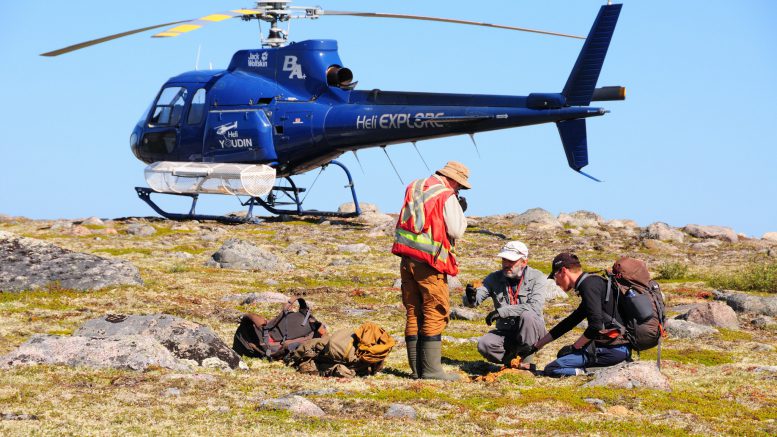
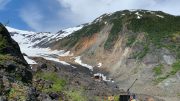
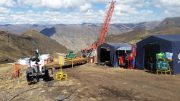
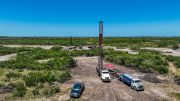
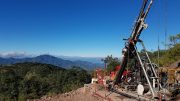
Be the first to comment on "Technology Metals Snapshot: Seven companies targeting strategic metals"